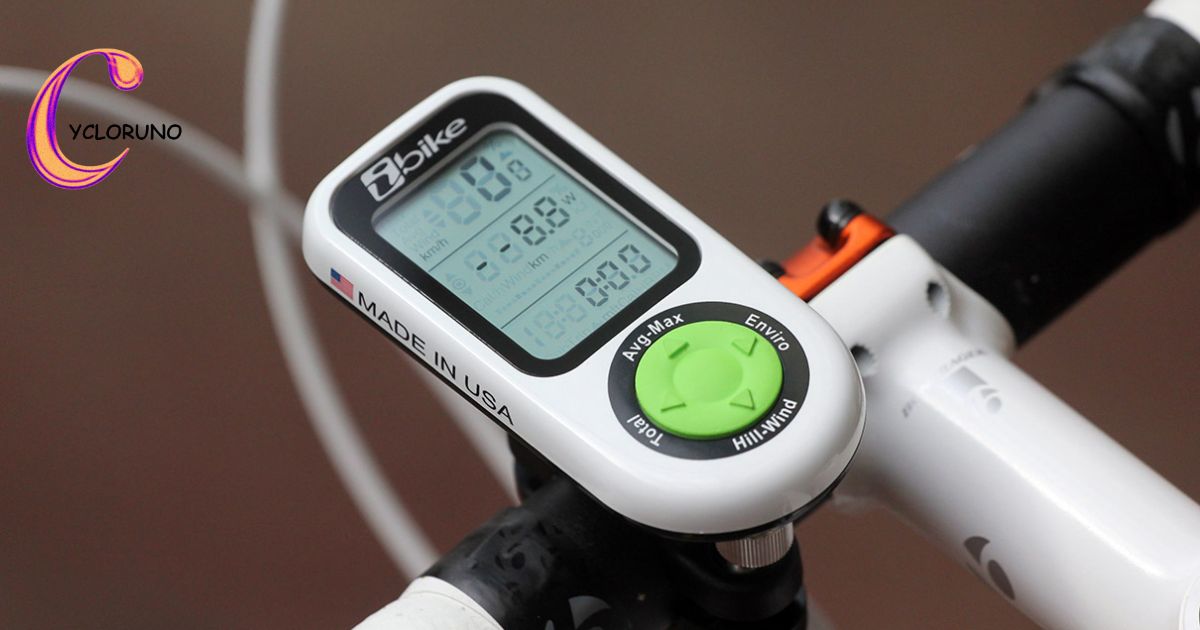Cycling with a power meter refers to the practice of using a specialized device to measure and quantify the power output generated by a cyclist during their ride. These power meters are typically attached to the bicycle and provide real-time data on the amount of force or energy the cyclist is exerting.
Revolutionize your ride with the precision of a power meter. Every watt counts, turning each pedal stroke into a journey of optimization and cycling excellence. Embrace the power meter revolution and elevate your cycling experience to new heights.
Utilizing a power meter during cycling involves measuring the watts of power exerted while riding. This real-time data optimizes training, refines race strategies, and enhances overall cycling efficiency for a more informed and impactful experience.
Optimizing Training Efficiency

Optimizing training efficiency with a power meter transforms each pedal stroke into a targeted effort, allowing cyclists to fine-tune workouts based on precise wattage data. This data-driven approach maximizes the effectiveness of training regimens for enhanced performance gains.
Precision Training
Utilizing a power meter provides cyclists with accurate and real time wattage data, enabling them to gauge the intensity of their efforts. This precision allows for a targeted approach to training, ensuring that each session aligns with specific performance goals.
Tailored Workouts In Personalized Zones
The power meter facilitates the establishment of personalized training zones based on individual fitness levels. This segmentation allows cyclists to optimize workouts for different physiological adaptations, from building endurance to enhancing sprint capabilities. By tailoring efforts to these zones, training becomes more efficient and goal-oriented.
Data-Driven Pacing For Optimal Endurance
Cycling with a power meter enables cyclists to maintain consistent power output, preventing overexertion or underperformance. This data-driven pacing strategy not only enhances endurance but also contributes to overall training efficiency by ensuring energy is allocated effectively throughout the entire workout or ride.
Continuous Performance Monitoring And Adaptation
Regular analysis of power meter data allows cyclists to monitor performance trends over time. This constant feedback loop enables adjustments to training plans, ensuring ongoing optimization based on individual progress and response to different workouts.
Navigating Courses With Data-Driven Insights

Navigating courses with data-driven insights involves harnessing the power of a cycling power meter to strategically analyze terrain variations. Cyclists can adapt their efforts in real time, optimizing energy distribution and making informed decisions for a competitive edge in races or challenging routes.
Terrain Analysis For Strategic Pacing
Leveraging data driven insights from a power meter enables cyclists to analyze course terrain with precision. By understanding elevation changes, gradients, and challenging sections, riders can strategically pace their efforts. This strategic pacing ensures efficient energy distribution, preventing premature fatigue and optimizing performance throughout the course.
Real Time Adjustments For Optimal Performance
Cycling with a power meter allows for on the fly adjustments based on real time data. As cyclists encounter varying conditions on the course, such as climbs or descents, the power meter provides immediate feedback. This empowers riders to adapt their intensity, choosing when to push harder or ease off, optimizing their efforts for maximum efficiency and maintaining a competitive edge.
Energy Conservation And Surge Management
Data-driven insights facilitate smart energy conservation and surge management. Cyclists can identify key sections where conserving energy is crucial and strategically plan for power surges or sprints. This approach not only enhances overall race performance but also ensures that energy resources are strategically allocated for the most critical segments of the course.
Post-Ride Analysis For Course Specific Strategies
This post-ride analysis provides valuable insights into pacing effectiveness, energy management, and areas for improvement. It contributes to a continuous learning process, allowing cyclists to fine-tune their approach for specific courses and achieve optimal results
Tailoring Workouts For Cycling Success

Tailoring workouts for cycling success involves using a power meter to establish personalized training zones. Cyclists can then precisely target different physiological adaptations, from building endurance to enhancing power, ensuring each workout aligns with individual goals and maximizes performance gains.
Establishing Personalized Training Zones
Utilizing a power meter allows cyclists to determine and define personalized training zones based on their individual fitness levels. These zones are specific intensity ranges tailored to different aspects of cycling performance, such as aerobic endurance, threshold efforts, and sprinting. By establishing these zones, cyclists can customize workouts to focus on specific physiological adaptations.
Building Stamina And Efficiency
With the insights provided by a power meter, cyclists can design workouts that target aerobic endurance. This involves sustained efforts within the prescribed power zone, gradually building stamina and efficiency over time. The power meter acts as a guide, ensuring that the intensity aligns with the desired training effect for enhancing overall endurance.
Threshold Training
Tailoring workouts for cycling success includes dedicated threshold training. Cyclists can identify and train at their functional threshold power (FTP), the intensity at which the body transitions from aerobic to anaerobic metabolism. By consistently pushing these limits in structured workouts, cyclists can raise their threshold, improving sustainable power output and performance.
Power And Sprint Development
For those focusing on explosive efforts and sprinting, a power meter aids in tailoring workouts to enhance power development. Intervals and drills within specific power zones target the explosive energy systems, helping cyclists improve their ability to generate high power outputs during sprints or short, intense efforts.
Continuous Progress Monitoring And Adjustment
The power meter’s real-time feedback and post-workout analysis enable cyclists to monitor progress and make necessary adjustments to their training plans. This continuous refinement ensures that workouts remain aligned with evolving fitness levels, promoting sustained improvement and cycling success over the long term.
Frequently Asked Questions
What Is A Power Meter In Cycling?
A power meter is a device attached to a bicycle that measures the power output in watts generated by a cyclist during a ride.
How Does A Power Meter Work?
Power meters typically use strain gauges to measure the force applied to the pedals or other parts of the bike. This data is then used to calculate power output in watts.
Why Is Cycling With A Power Meter Beneficial?
Cycling with a power meter provides real-time data on performance, helping cyclists optimize training, set personalized zones, and analyze their efforts for improved efficiency and overall success.
Can A Power Meter Help With Race Strategy?
Yes, cyclists can use power meters to develop effective race strategies by pacing efforts, managing energy output, and making informed decisions based on real-time data during races.
How Do Cyclists Set Personalized Training Zones With A Power Meter?
Personalized training zones are established by conducting a power test or FTP (Functional Threshold Power) test.
Final Thoughts
Cycling with a power meter transcends the traditional biking experience, offering cyclists a transformative journey into precision, optimization, and measurable success. From tailoring workouts to navigating courses strategically, the power meter has become an indispensable tool for cyclists of all levels.
Embracing this technology not only unlocks the potential for enhanced training and racing but also fosters a deeper connection between the rider and the road, where every watt becomes a pathway to continuous improvement and cycling excellence.








